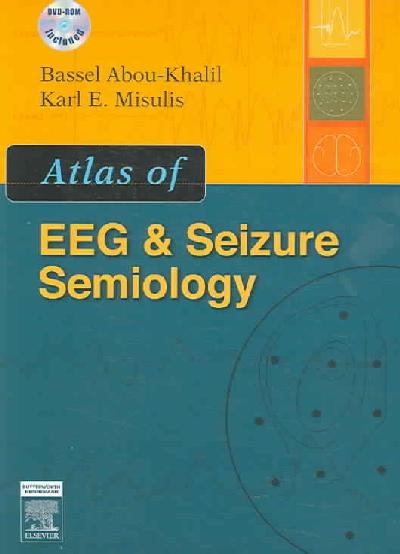Description
This clinical atlas consists of both a DVD and companion text that
cover basic classifications and definitions of seizures and epilepsy,
EEG technology and clinical EEG before proceeding to the key content
of EEG traces and video samples. The DVD allows you to view the EEG
tracing in action, with a side-by-side video of a patient during the
ictal phase. The accompanying text concisely covers the key
principles, scope, limitations, diagnostic importance, and prognostic
relevance for each interpretation.
Key Features
*DVD allows viewing of EEG tracing in action ?during the seizure ?
alongside video of patient during inter-ictal phase (while seizure is
occurring)
*Adult and pediatric patients
*Emphasizes the clinical applications of EEG and its diagnostic
capabilities.
*Edited and written by experts who discuss the principles, scope,
limitations, diagnostic importance, prognostic relevance, and
complications for each interpretation
-BOOK CONTENTS-
Introduction
EEG Technology
EEG Analysis
Routine EEG
Approach to Video EEG
Seizure Semiology and Differential Diagnosis
-DVD DISK CONTENTS:-
Introduction
Seizures and Epilepsy
Definitions
Classifications
Glossary of Seizure Signs and Symptoms (linked to video examples)
Classifications of Seizures (linked to video and EEG examples)
Classifications of Epilepsies
Differential Diagnosis (linked to Video and EEG examples)
Semiology of Temporal Lobe Epilepsies
Semiology of Frontal Lobe Epilepsies
Semiology of Parietal and Occipital Lobe Epilepsies
Semiology of Other Seizure Types and Syndromes
Semiology of Generalized Seizure Types
Role of EEG in Diagnosis and Management
Routine EEG
EEG-video Monitoring (other indications for EEG; most appropriate EEG
and EEG monitoring studies)
EEG Technology
Electrodes
Digital EEG Machines
Amplifiers
Filters
Technical Standards
Electrode Placement ?Nomenclature
Scalp and Sphenoidal
Montages
Localization
Invasive and Semi-Invasive Electrodes
I. Clinical EEG
The normal adult EEG
Artifacts
Abnormalities
Non-Epileptiform
Slow Abnormalities
Focal
Generalized
Amplitude Abnormalities
Focal
Generalized
Periodic Patterns
EEG in Coma and Electrocerebral Silence
Other Non-Epileptic Abnormalities
Benign Variants
Interictal epileptiform
Focal
Generalized
Electrographic Seizures
Ictal Patterns
* Ictal Patterns * Ictal Onset * Ictal Evolution * Seizure
Termination * Guidelines for Identification of Seizure Discharges
Specific Seizure Types
Focal
* Temporal * Frontal * Parietal * Occipital * Secondarily Generalized
Generalized
* Generalized Absence * Generalized Myoclonic * Generalized Clonic *
Generalized Tonic * Generalized Tonic-Clonic * Generalized Atonic *
Infantile Spasms
Neonatal EEG
Normal Patterns
Abnormal Patterns
II. Video EEG
Methods and Approach to Interpretation Clinical Signs
* Epigastric Aura * Speech Arrest * Ictal Well-Formed Language *
Ictal Jargon * Ictal Aphasia * Eye Deviation * Head Turning ?Early
* Head Turning ?Adversive Late * Extremity Immobility * Dystonic
Posturing ?Arm, Leg * Tonic Posturing * Focal Clonic *
Oroalimentary Automatisms * Extremity Automatisms * Ictal Drinking *
Ictal Spitting * Ictal Vomiting * Bizarre Ictal Vocalization * Ictal
Screaming * Ictal Eye Blinking * Ictal Unilateral Eye Closure *
Generalized Tonic * Generalized Clonic * Postictal Nose Wiping *
Postictal Aphasia, Alexia * Rapid Postictal Recovery (Right Temporal
CPS) * Rapid Postictal Recovery (Frontal CPS) * Postictal Todd뭩
Paralysis
Signs Evoked by Electrical Stimulation
* Focal Motor ?Tonic * Focal Motor ?Clonic * Focal Motor ?
Posturing * Eye Version ?Head Version * Negative Motor Effect *
Focal Sensory * Auditory (Patient Report) * Global Aphasia * Anomia *
Loss of Repetition Ability * Apraxia
Seizure Types
Partial
Simple Partial
* Simple Partial Motor without a march, simple partia


